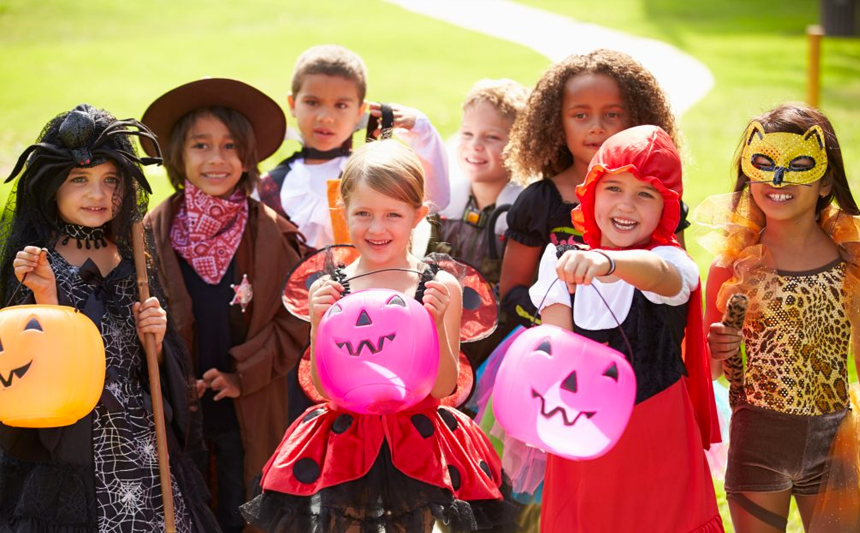Choosing a safe Halloween costume

October is here, and if you’re like most parents, you’ll soon be putting together your children’s Halloween costumes. When you do, keep these tips in mind:
Think safety
- Masks can obstruct visibility and make it difficult for your child to breathe. If you can, opt for makeup instead. If your child does wear a mask, make sure his or her vision is not obstructed so much that they might trip or stumble, and encourage him or her to take it off before crossing the street.
- Make sure makeup or face paint is non-toxic. Read the ingredients to be sure that your child isn’t allergic to anything in the face paint.
- Never use decorative contact lenses. They can cause eye infections.
- Buy costumes that are labeled “flame resistant.” Many people and places will have jack-o-lanterns, candles or other decorative flames out – so be careful.
- Check costume accessories for safety hazards. Knives, swords or other accessories can often be sharp. If your child could hurt themselves by falling on the accessory, skip it or find something else to use!
- Make sure the costume fits properly. A costume that’s too big or too small is not only uncomfortable, it can cause your child to trip or fall.
Think visibility
- Choose a light-colored costume if possible. This makes your child more visible to cars and other trick-or-treaters.
- Kids can get excited during trick-or-treating and forget road safety rules. Put reflective tape on your child’s costume to help drivers spot them on dark streets.
- Have your child carry a flashlight or glow stick so they’re more visible. Check the batteries on the flashlight to make sure they will last throughout trick-or-treating.
Think comfort
- Make sure the costume fits properly. A costume that’s too small can be uncomfortable or even restrict breathing. Too big, and it could be a tripping hazard.
- Oversized shoes might be a funny part of a clown costume, but they can make walking difficult or even unsafe.
- If your child wears a cape, make sure it’s not too tight and it doesn’t drag the ground!
- Make sure costume jewelry and other accessories aren’t too tight around your child’s throat.
Be ready for emergencies
- Give an older child a cell phone in case of emergency.
- Put a nametag with your phone number on your children’s costumes in case you get separated.
Remember, Halloween should only SEEM scary. A fun, safe night starts with a good costume.
This content was produced by UK HealthCare Brand Strategy.




